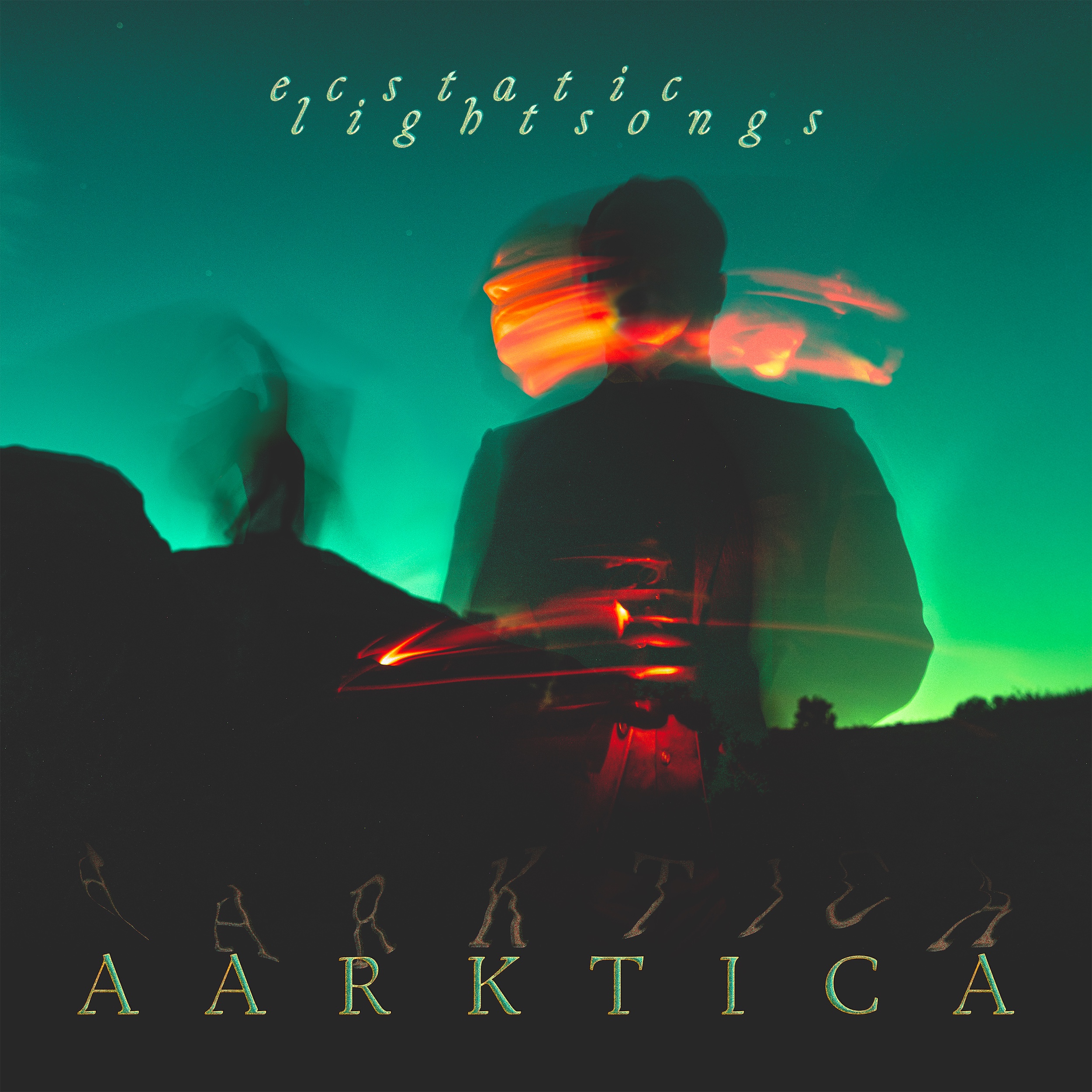Jon DeRosa has spent more than two decades bending sound into spaces where memory, melancholy, and transcendence overlap. Under the name Aarktica, he has built a discography that feels like an ongoing dialogue between stillness and motion, silence and the echo that follows it. With his tenth studio album, Ecstatic Lightsongs (HanaqPacha Records), DeRosa opens that conversation wider than ever before. The record pulses with rhythm and warmth, merging the shimmering ambience of his early work with the textured immediacy of post-rock and darkwave. It feels like the sound of light breaking through the fog.
Where earlier Aarktica albums often leaned toward the ethereal and meditative, Ecstatic Lightsongs thrives on motion. DeRosa imagined the project as a fusion of rhythm and ambience, inspired by the patient space of Talk Talk’s Laughing Stock. You can hear that philosophy from the first track, “Trick of the Light.” The drums don’t dominate, they breathe. Chiming guitars and analog synths weave through each other like fragments of a dream, while DeRosa’s baritone voice grounds it all in something human and tender. It’s the sound of someone tracing the outline of a feeling long after it’s passed.
That balance between pulse and pause defines much of the album’s world. On “To Love Is to Believe,” DeRosa leans into the idea that rhythm can be emotional rather than mechanical. The percussion moves like a heartbeat under synth tones that shimmer with quiet intensity. “Why Say Anything?” strips things back even further, a skeletal groove holding space for his voice to linger in the air like a confession. Throughout, you sense an artist who understands that the most powerful moments often come from restraint.
Aarktica has always been a collaborative project at heart, and Ecstatic Lightsongs continues that tradition beautifully. Britt Warner appears on three tracks, her ethereal voice a perfect foil for DeRosa’s weighty baritone. Together, they create something haunting and luminous on “Destination Paradise,” a song that reimagines the strange hope of “cargo cults” as a metaphor for modern spiritual yearning. It’s one of the record’s standout moments—lush, otherworldly, and quietly devastating. The way Warner’s voice rises through the haze feels almost like salvation.
Elsewhere, “Cloud Formations” drifts with soft modular synths and fingerpicked guitars, capturing the fleeting intimacy of a conversation that lingers long after it ends. Cellist Henrik Meierkord joins on “The Bird That Hides Itself,” transforming it into a mournful duet that feels suspended in time. Even the album’s instrumental centerpiece, “Ecstatic Light Transmission,” radiates with emotional clarity. The granular synths and degraded tape textures recall Aarktica’s earliest sound experiments, yet everything here feels renewed, as if DeRosa has finally reconciled his ambient beginnings with his pop and post-rock impulses.
DeRosa’s lyrics, sparse but evocative, dwell on memory and connection—the kind of small details that outlive the moments they come from. He sings about moonlight on a face, the way clouds move during a conversation, the subtle shifts that turn ordinary encounters into lasting symbols. The writing mirrors the music’s sense of space: minimal, but full of echoes. You can hear a lifetime of quiet observation distilled into these songs. The album closes with a striking reinterpretation of The Chameleons’ “Second Skin,” turning the post-punk classic into a cinematic epilogue that ties the record’s themes together. It’s reverent without being nostalgic, proof that DeRosa’s vision is rooted as much in the future as in the past.
For an artist who began exploring sound after losing hearing in one ear, Ecstatic Lightsongs feels like a triumphant act of perception. It’s not just about what’s heard, but about how sound can be felt—how it can move through memory, grief, and joy until it becomes something transcendent. The result is one of Aarktica’s most cohesive and emotionally resonant works to date.
Featured Image: Artist Supplied




